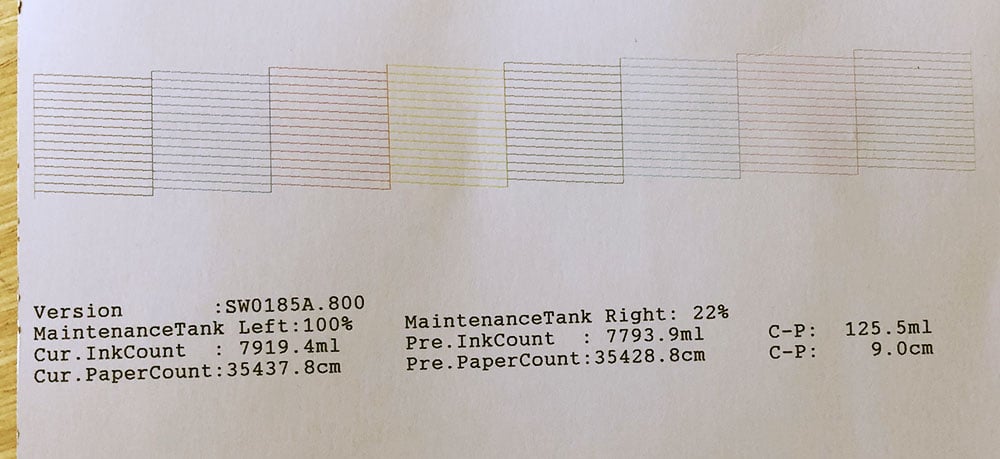I recently got into a discussion with a photographer who was saying that most people don’t make big prints anymore. Since I had just spent the day running an entire 50-foot roll of Legacy Baryta through my Epson 9800 making 24x30s for an upcoming exhibition — more on that in good time — I didn’t immediately agree.
I got to wondering how many big prints I’d made in the last 10 or so years that I’ve had the 9800. It occured to me that all I had to do was look at a nozzle check:
35437 cm is about 1160 feet of paper. I normally print on 36-inch rolls, with 2-inch margins, which allows me to print 32 inches wide. I print on 44-inch paper when I need to go bigger, and the is the first time I’ve used 24-inch paper. I used to print on 24×30 flat sheets, which I arranged in the printer with the short direction up and down. I have a P800 for prints C-size of smaller, and it is the latest in a long line of 17-inch printers, so I’ve never made small prints on the 9800.
If I put all of that together and apply Kentucky windage, my guess is that I’ve made about 400 big prints. Since the printer cost me about $5K, that means that I’ve spent about $12.50 a print for the hardware. Less if you include the fact that the printer came with about $600 worth of ink.

Can I ask, since you own both a 9800 and a p800, if you see much difference in print quality? Resolution/color anything? I own a 7800 and am happy with it, but sometimes wonder if a newer printer would visually improve my prints.
The P800 is a little sharper. My old 4900 had a wider gamut. But, for big prints, the 9800 is great. And it almost never clogs! If you get the P800, keep the 7800 until it breaks. I’ve heard parts are hard to come by.